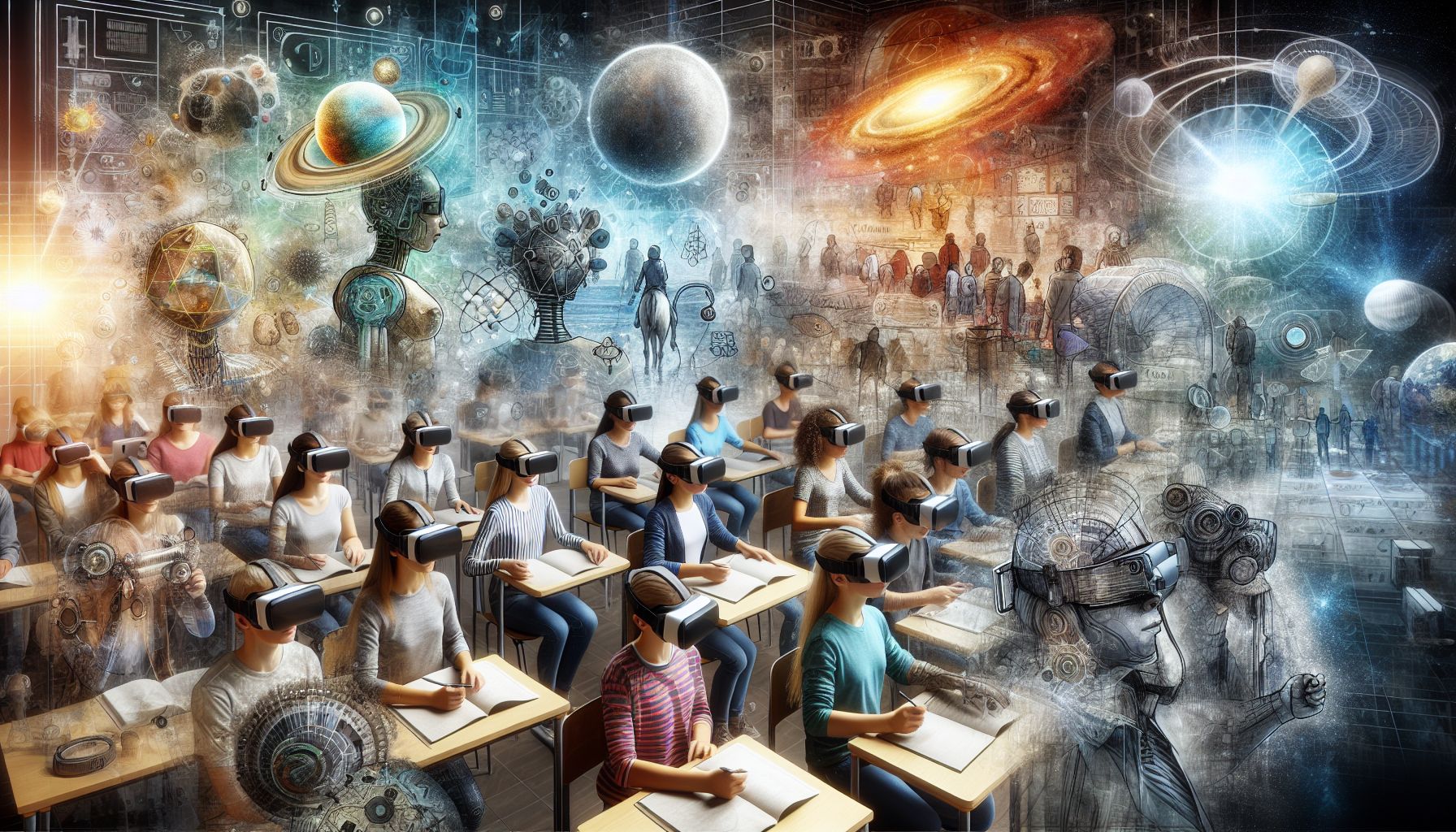📌 Let’s explore the topic in depth and see what insights we can uncover.
⚡ “Imagine transporting your classroom to the pyramids of Egypt, the bottom of the ocean, or even outer space. With virtual reality in education, the only limit to learning is how far we’re willing to imagine!”
In the ever-evolving field of technology, there’s always something new and exciting on the horizon. And one of those groundbreaking innovations taking the world by storm is Virtual Reality (VR). While VR has long been associated with the entertainment industry, notably gaming, it’s now making significant strides in a perhaps unexpected domain - education. This blog post is a deep dive into the fascinating world of Virtual Reality in education. We’ll explore why VR is set to revolutionize learning, the myriad benefits it can offer, exciting real-world applications, and a glimpse into what the future of VR in education might look like.
Get ready, because class is in session - and it’s unlike any class you’ve ever been in before! 🚀

"Diving Deep into Knowledge with Virtual Reality"
A New Dimension to Learning: What is VR in Education? 🎒
Virtual Reality in education, often referred to as EdTech VR, is the use of VR technology to create immersive learning environments for students. It’s the equivalent of swapping out your traditional textbook for a 3D interactive experience, where you can explore, interact, and learn in a remarkably engaging and intuitive way. Imagine learning about the Roman Colosseum not by reading about it or looking at pictures, but by actually walking around it, exploring its nooks and crannies, and experiencing its grandeur firsthand - all without leaving your classroom! That’s the kind of immersive learning experience VR in education can provide.
The Benefits of VR in Education: Learning Reimagined 💡
📎 You’ll find that numerous benefits to using VR in education, and research has shown that VR can significantly enhance learning outcomes. Here are a few key benefits: * Enhanced Engagement and Retention: VR creates engaging, immersive experiences that can help students better understand and remember complex concepts. Studies have shown that VR can increase retention rates by up to 75% compared to traditional learning methods. * Inclusive Learning: VR can provide equal learning opportunities for all students, regardless of their physical abilities or learning styles. For example, students with mobility issues can use VR to participate in physical activities, while visual learners can benefit from the visual and spatial nature of VR experiences. * Safe Learning Environment: VR allows students to practice skills and explore concepts in a safe, risk-free environment. For example, medical students can practice surgical procedures without any risk to patients, and chemistry students can conduct potentially dangerous experiments safely.
Real-World Applications of VR in Education 🌍
The use of VR in education is not just a theoretical concept, but a reality being embraced by educational institutions around the world. Here are a few exciting examples: * Google Expeditions: This VR app allows teachers to take their students on virtual field trips to over 500 different locations around the world, including museums, underwater expeditions, and even outer space! * Labster: A VR platform that allows students to conduct laboratory experiments in a virtual environment, providing them with hands-on experience without the need for physical lab equipment. * Unimersiv: This VR app provides immersive educational experiences on a wide range of topics, from history and science to arts and culture.
The Future of VR in Education: A Glimpse Into Tomorrow’s Classroom 🚀
While the current applications of VR in education are impressive, they are just a taste of what’s to come. As VR technology continues to evolve, we can expect to see even more innovative and immersive learning experiences. For example, we might see fully virtual classrooms, where students from all over the world can learn together in a shared virtual space. Or, the use of haptic technology could allow students to physically interact with virtual objects, adding a whole new level of immersion and interactivity. One thing is certain: the future of VR in education is bright, and it’s a future we can all look forward to with excitement.
🧭 Conclusion
Virtual Reality in education is truly a game-changer. It offers a new dimension to learning, providing students with immersive, engaging, and inclusive educational experiences. With real-world applications already making a difference in classrooms around the world, and an exciting future on the horizon, VR in education is not just a passing trend, but a revolution in the making. So, strap on your VR headset and get ready for a learning experience like no other. Welcome to the future of education. It’s going to be a wild ride! 🚀
📡 The future is unfolding — don’t miss what’s next!
